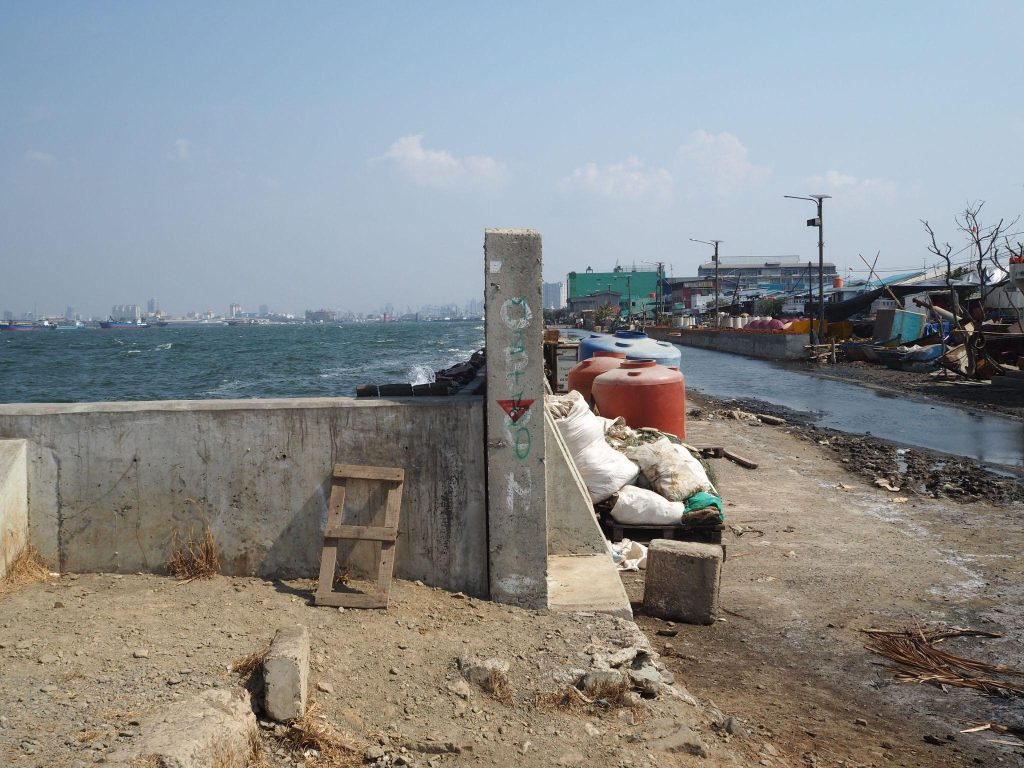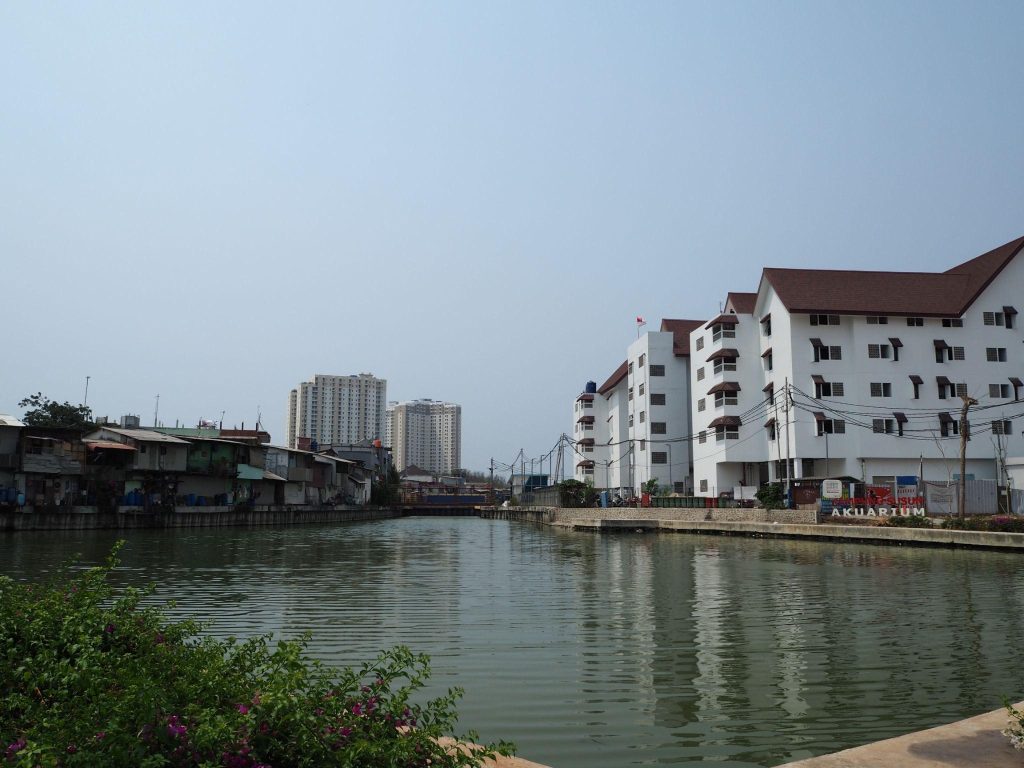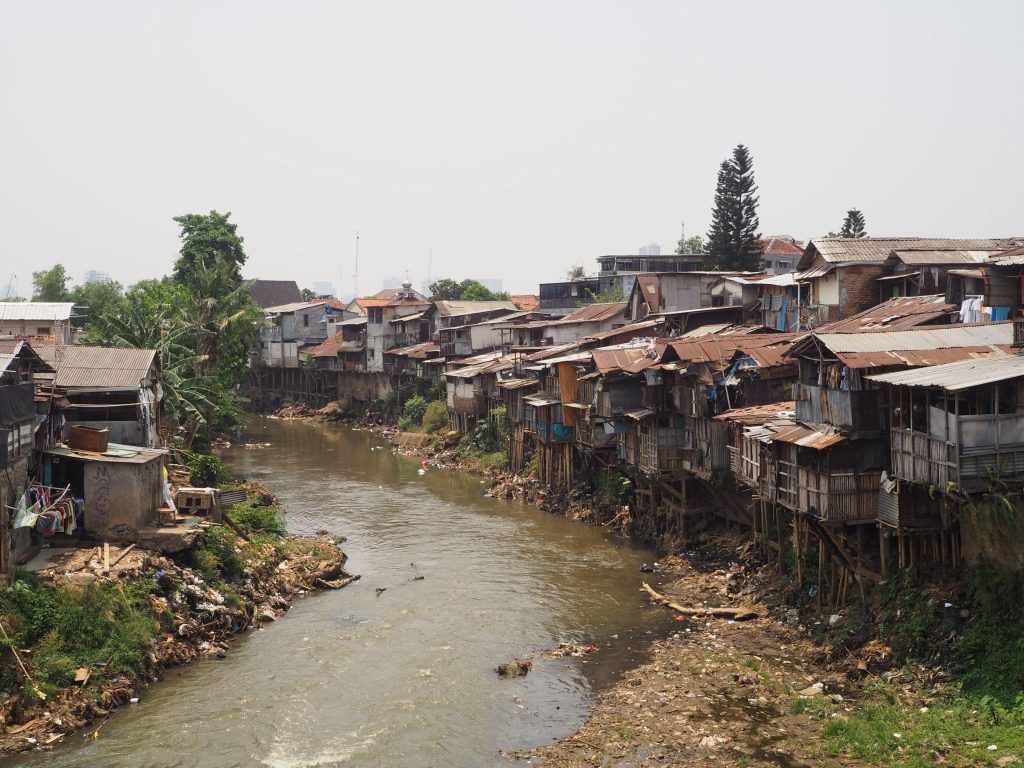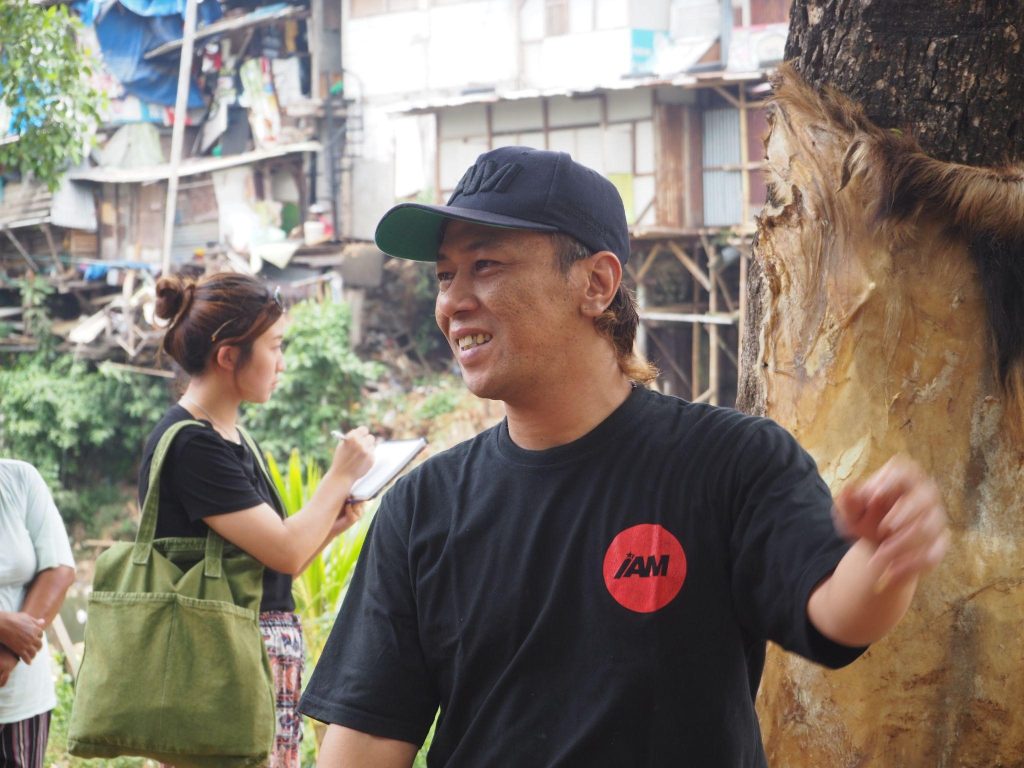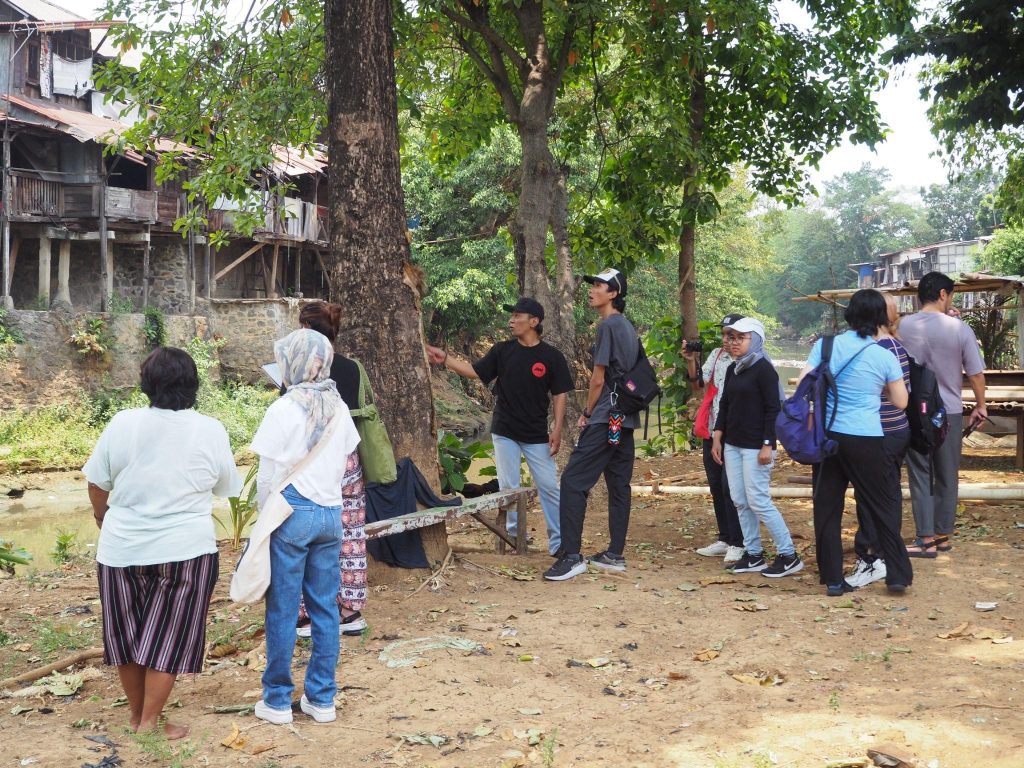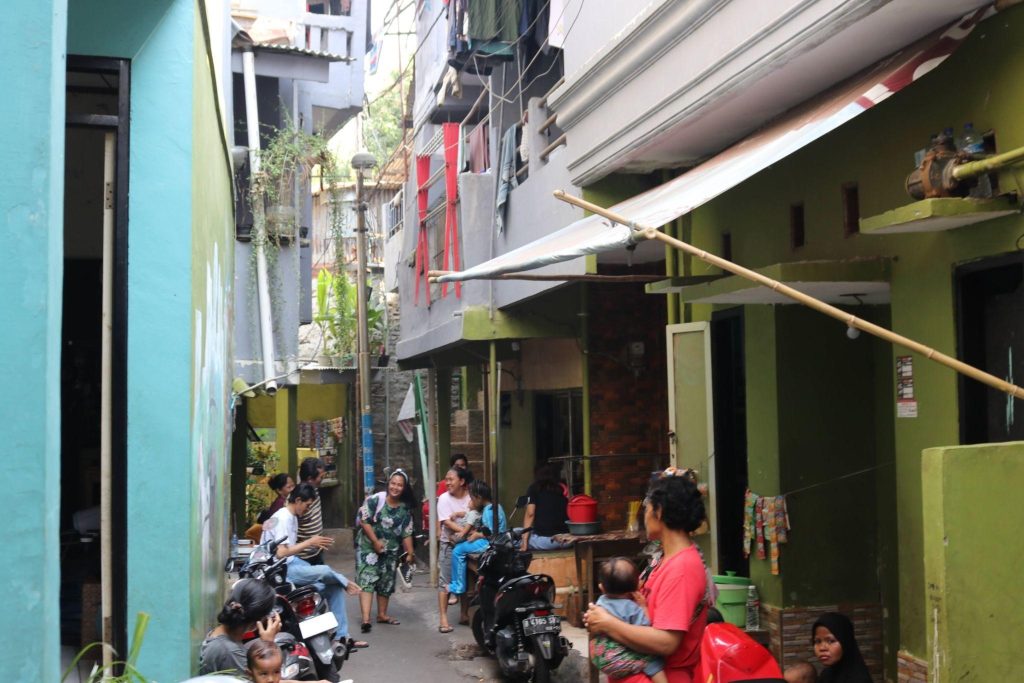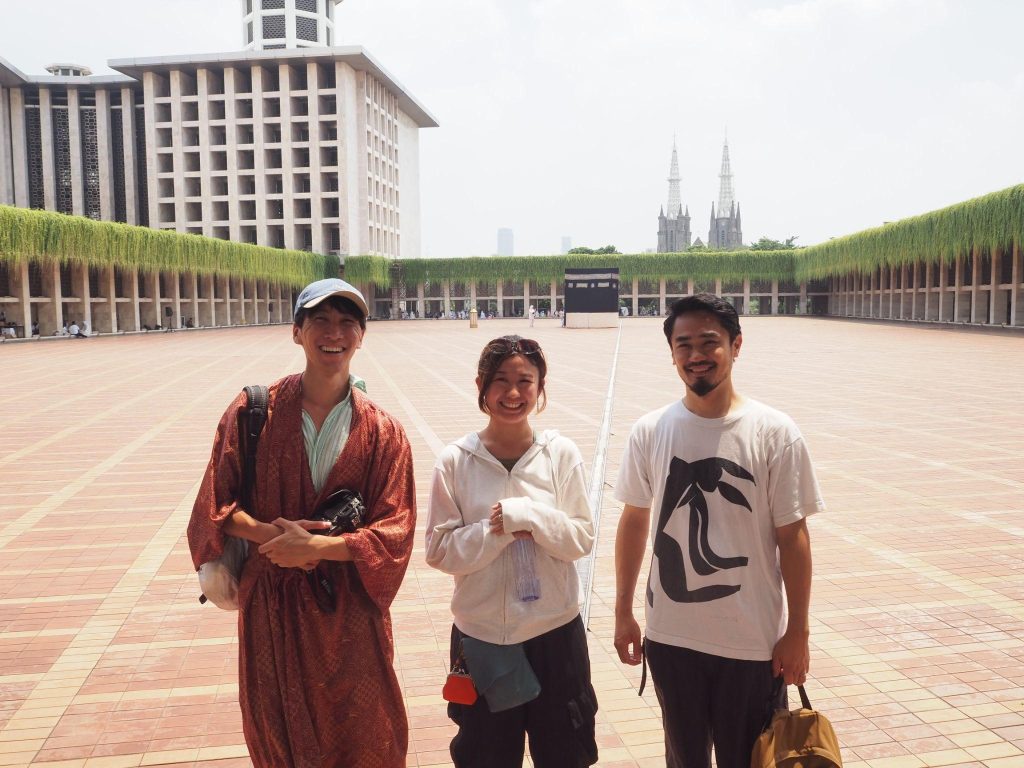20231215
FUTURE HABITAT PROJECT 2023 in Indonasia
Natsumi Seo, Keigo Kobayashi, Keigo Kobayashi Laboratory, Satoko Shibahara
The Future Habitat Project began its activities in 2021.
This time, we visited Jakarta and Banda Aceh in Indonesia as our first overseas research. A total of six members participated in the project, including Natsumi Seo (NOOK, a general incorporated association), an artist who produces paintings and writings while considering the language of the local people and recording the landscape, and Satoko Shibahara, an editor who works in the fields of art and architecture as an editor, writer, planner and publicist.
October 3 - October 5 Jakarta
The first half of the trip was spent surveying flood countermeasures in Jakarta, the capital of Indonesia.
Jakarta has been hit by frequent floods caused by heavy rainfall and damage from high tides in areas where the ground has subsided. This time, we visited Kampong, a settlement and sluice gate along the Ciliwung River, which flows through the northwestern part of Java, in Jakarta.
*Kampung (Indonesian) means “aboriginal village. It is known as the center of ethnicity and culture, and a place with strong ties between families and neighbors.
In 2016, Kampung Akuarium was forcibly evicted by state administrative measures and subsequently rebuilt with the participation of its residents. Once a community spread out along the river, the government intervention transformed it into a five-floor housing complex, and people’s lifestyles changed a lot.
The former lifestyle had been open to the community with active communication among residents, but the three-dimensional living environment has turned the interior into a dark and closed environment. Although flood countermeasures have been fully implemented and the sense of danger of damage has diminished, the community that had been deeply rooted in the area seemed to be weakening.
Through the stories of the local people, we became acutely aware of the difficulty of bridging the gap between the progressing development and the feelings of the residents left behind.
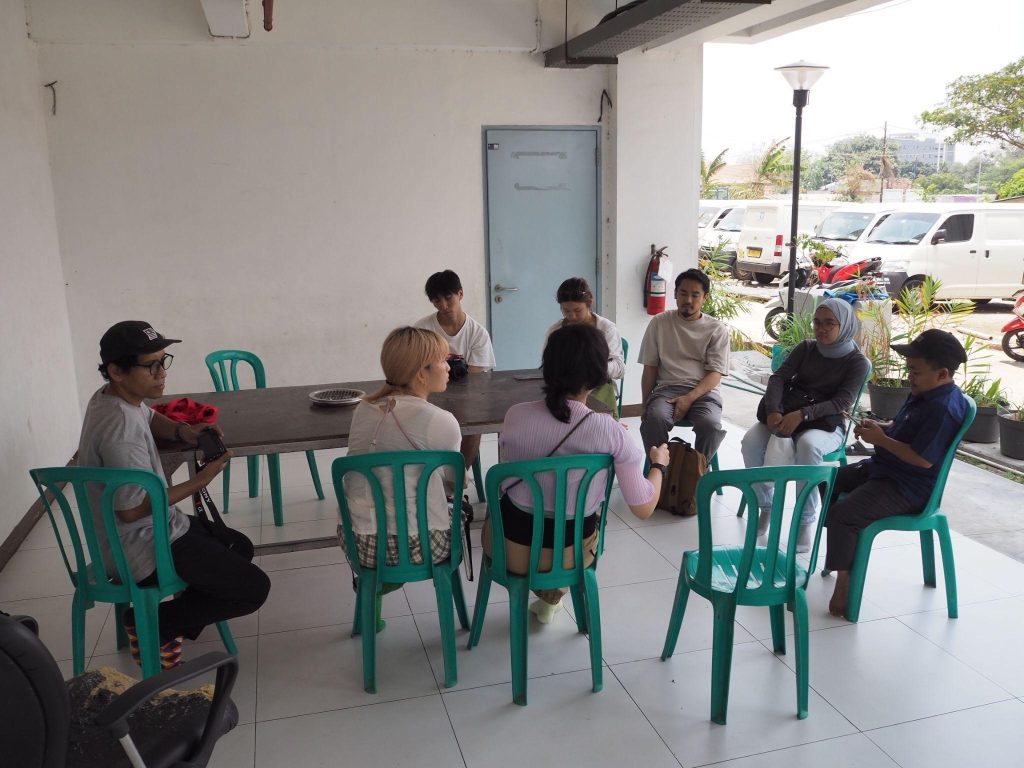
Opened public space in the groung floor
©Keigo Kobayashi Lab.
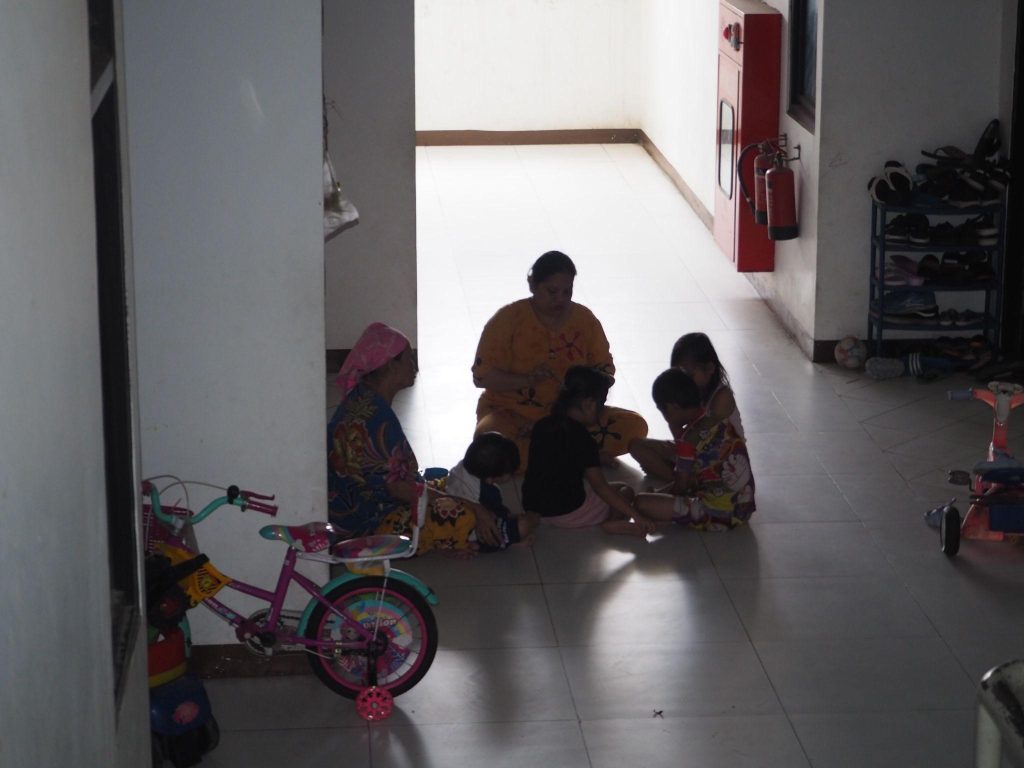
The residents had a conversation in a dark hallway
©Keigo Kobayashi Lab.
On the other hand, in Kampung, which remains unchanged from before, residents of all ages, from children to the elderly, live together, communication among residents is active, and the whole community is building a life together.
Although this area is located on ground lower than sea level, it has not suffered any serious damage due to the sluice gate constructed around 1995.
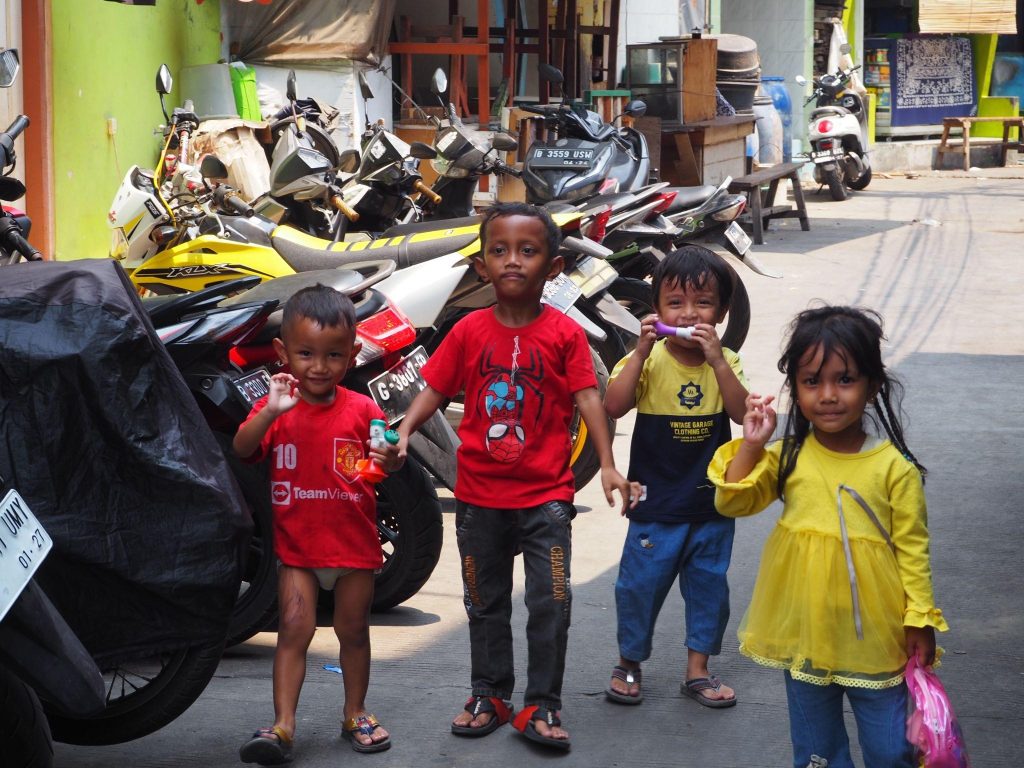
Children living in a kampung
©Keigo Kobayashi Lab.
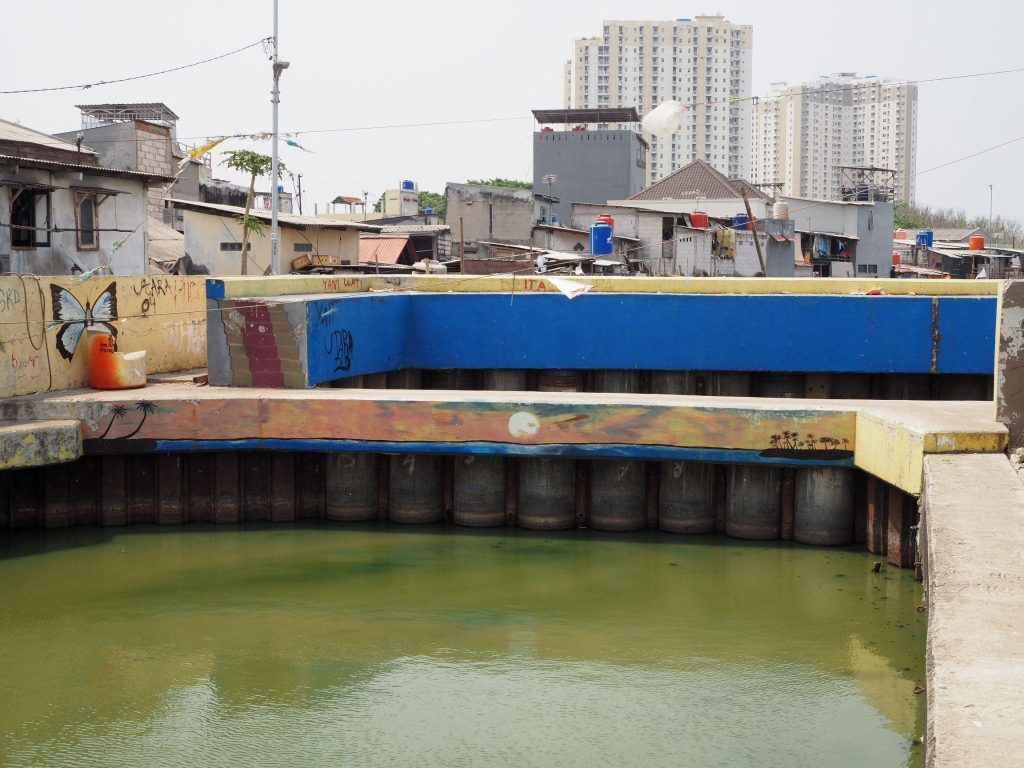
The water gate built in 1995, behind this gate, the old water gate built in dutch colonial era also exists
©Keigo Kobayashi Lab.
Pintu Air Manggarai
The water gates are part of the Ciliwung River’s flood control efforts by diverting water out of Jakarta via a canal from south Jakarta to the north coast. In preparation for various disaster risks such as storm surges, floods, and heavy rain, manual adjustments are made in such cases. Also, here we are faced with the problem of piles of garbage that obstruct the work of the sluice gates. There was a lot of garbage floating on the water surface, and a large number of gigantic foreign fish were jumping around. After watching for a while, an old man appeared and began to catch them using a net with practiced skill. These fish are thought to be used for food or caught for river conservation activities, but their specific destination is unknown.
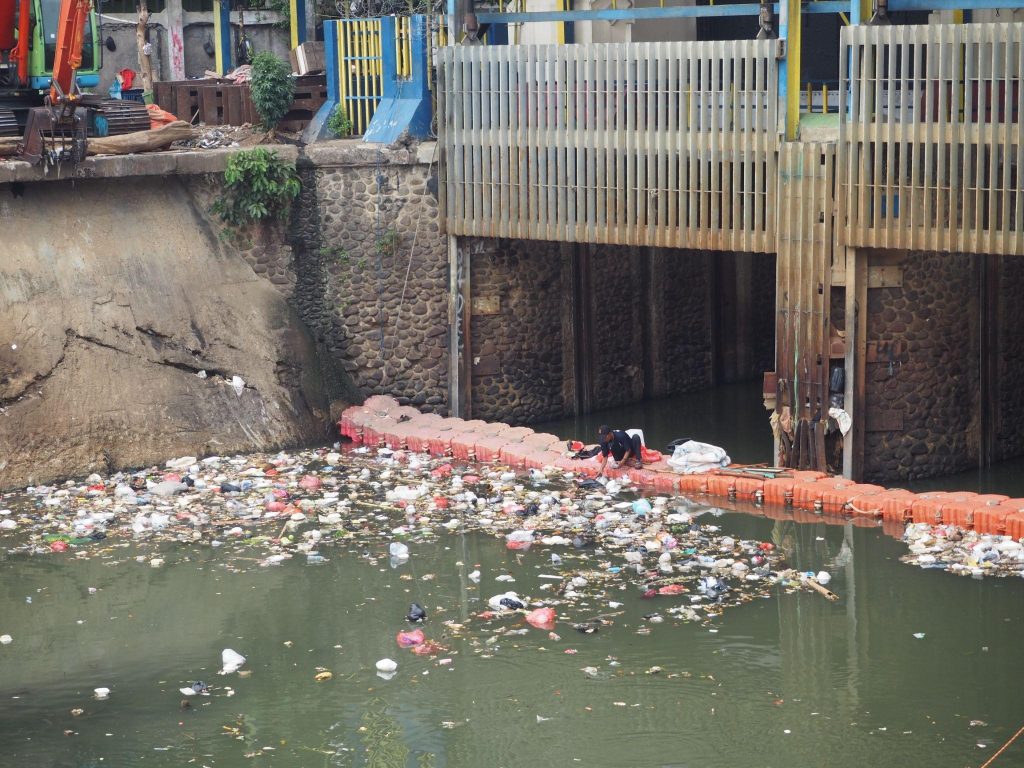
Garbage is blocking the flow of the water gate
©Keigo Kobayashi Lab.
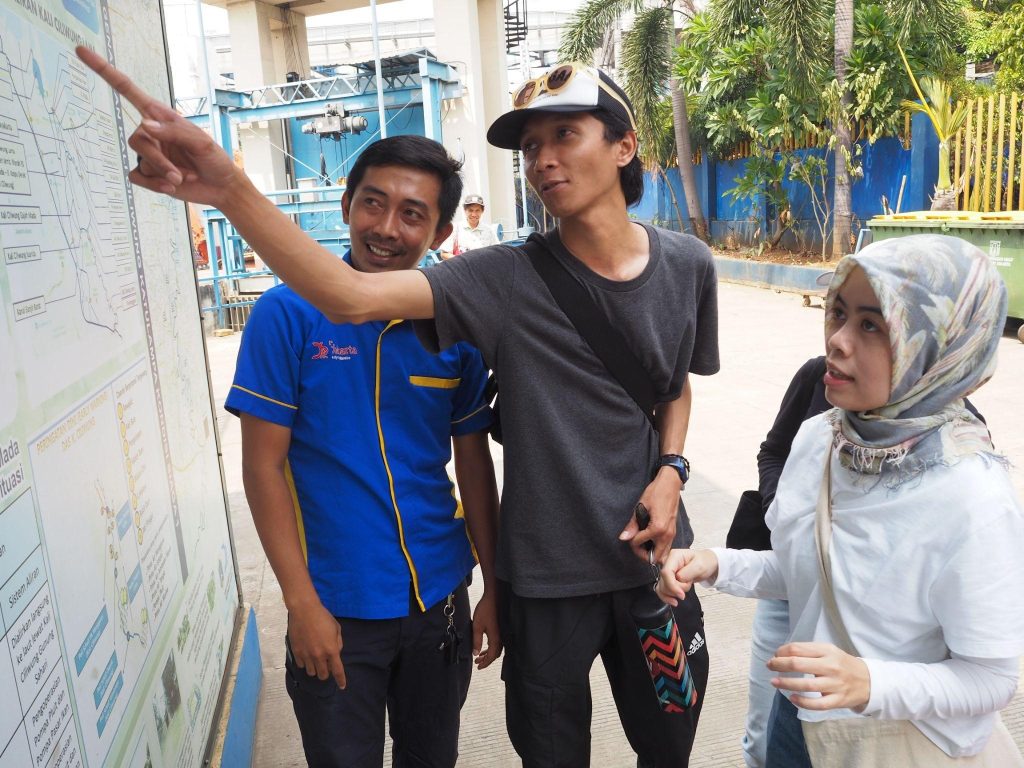
The staff of the water gate discripted the history
©Keigo Kobayashi Lab.
Slamet Riyadi area
This area was severely damaged in 2002. The new area and the old area coexist across the river. Behind the wall of Kampung in the old area, military facilities have existed since around the 17th century, and this Kampung was built between the river and the military.
We did an interview with a man who lives and works in this Kampung. This man experienced the 2002 flood and was involved in the subsequent reconstruction of temporary housing after 2003. The reconstructed houses (stilt houses made of bamboo) were converted into two-story buildings for shelter and storage of valuables, and since 2002, the creek has been connected, and when the water level rises or flooding occurs, the water flow is dispersed, so no major damage has been reported.
Kampung Melayu
Kampung Melayu is located on a meandering river and is one of the most flood-prone settlements in Jakarta. There is a marked difference in elevation, and accordingly, each house has a different risk of flooding. In places where the difference in elevation of the land is particularly large, the water level has sometimes reached 3.3 meters.
Due to the frequent flooding, a bank revetment is being constructed on the opposite side of the river from Kampong. There is a plan to improve the sea wall in this village as well, but the residents prefer to live as they are and continue with the restoration due to the loss of fishing spots and reduced living space caused by the offsetting of houses.
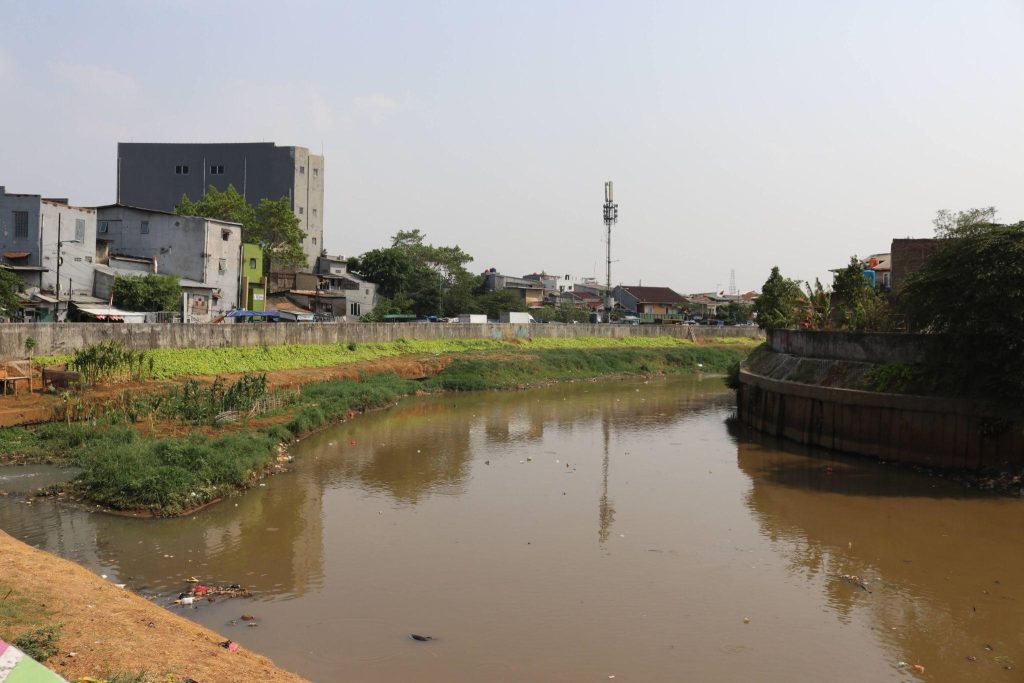
Progressing seawall maintenance
©Keigo Kobayashi Lab.
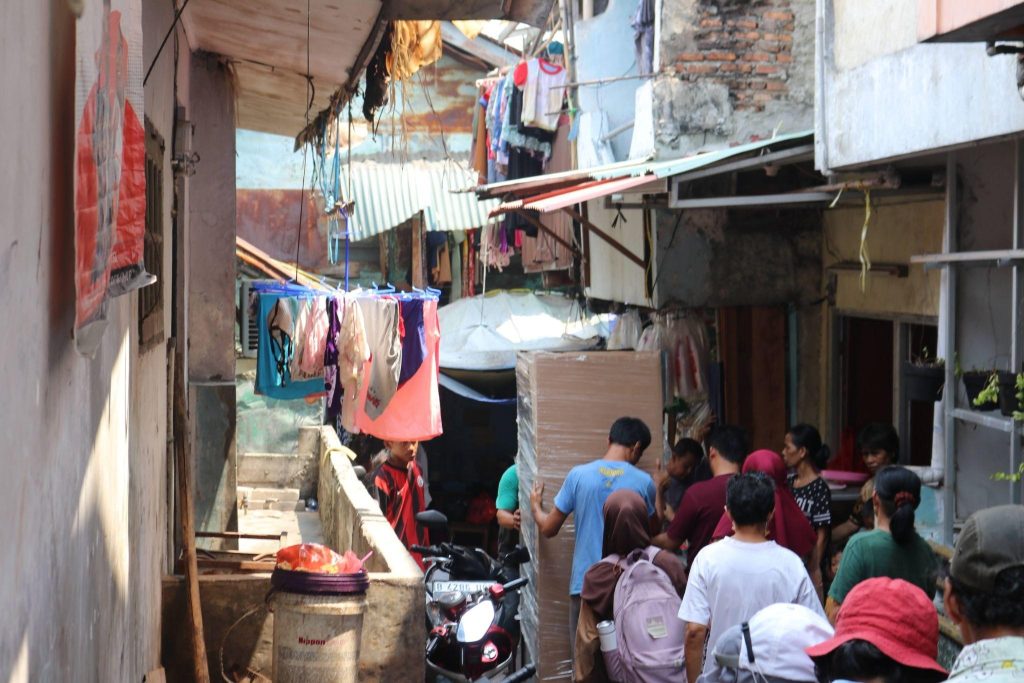
Life overflowing into the alley
©Keigo Kobayashi Lab.
On the day we headed to Banda Aceh, we visited Istiklal (built in 1978), one of the largest mosques in the world.
This mosque was built as a symbol of Indonesia’s independence and is considered a place to demonstrate national unity. It has an impressive circular dome and is said to be extremely spacious inside, capable of accommodating up to 100,000 worshipers. The adjoining Christian church could also be seen from the courtyard. This scene symbolizes religious diversity.
